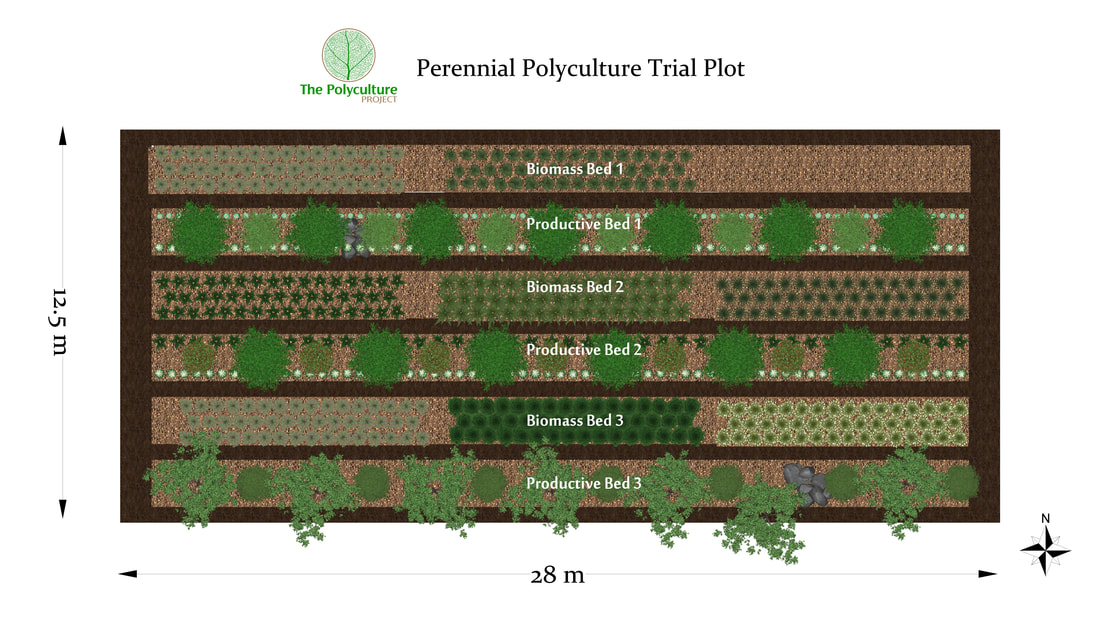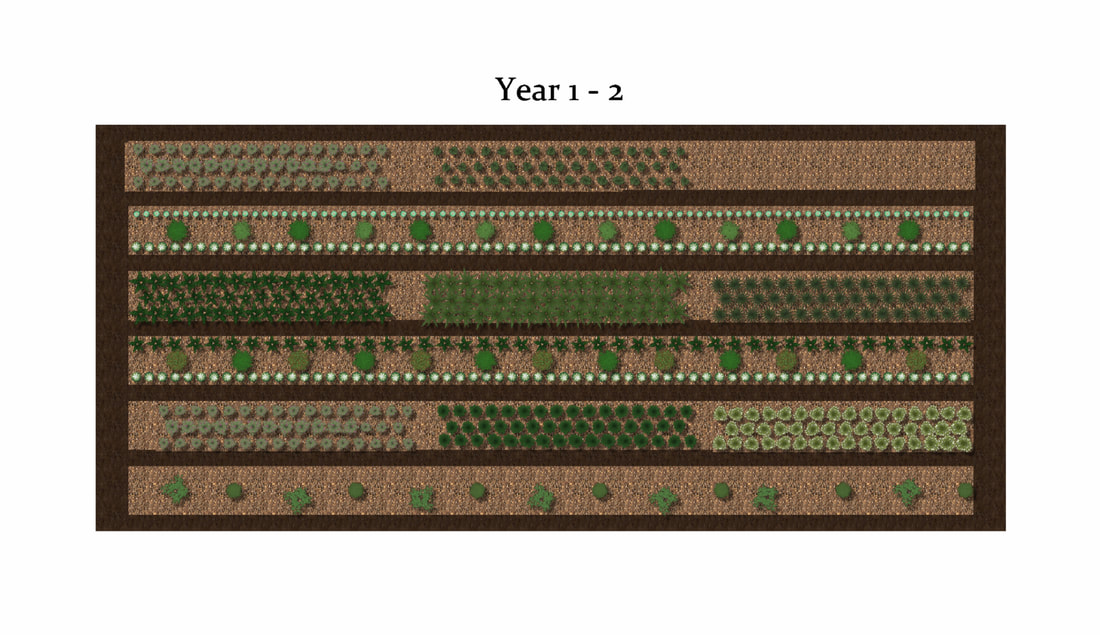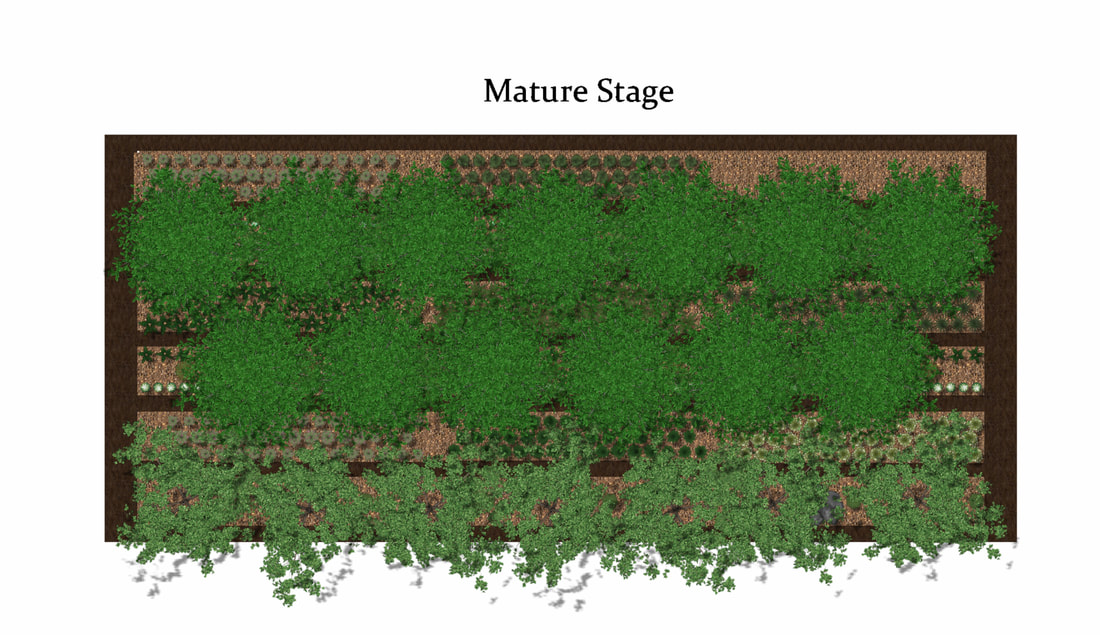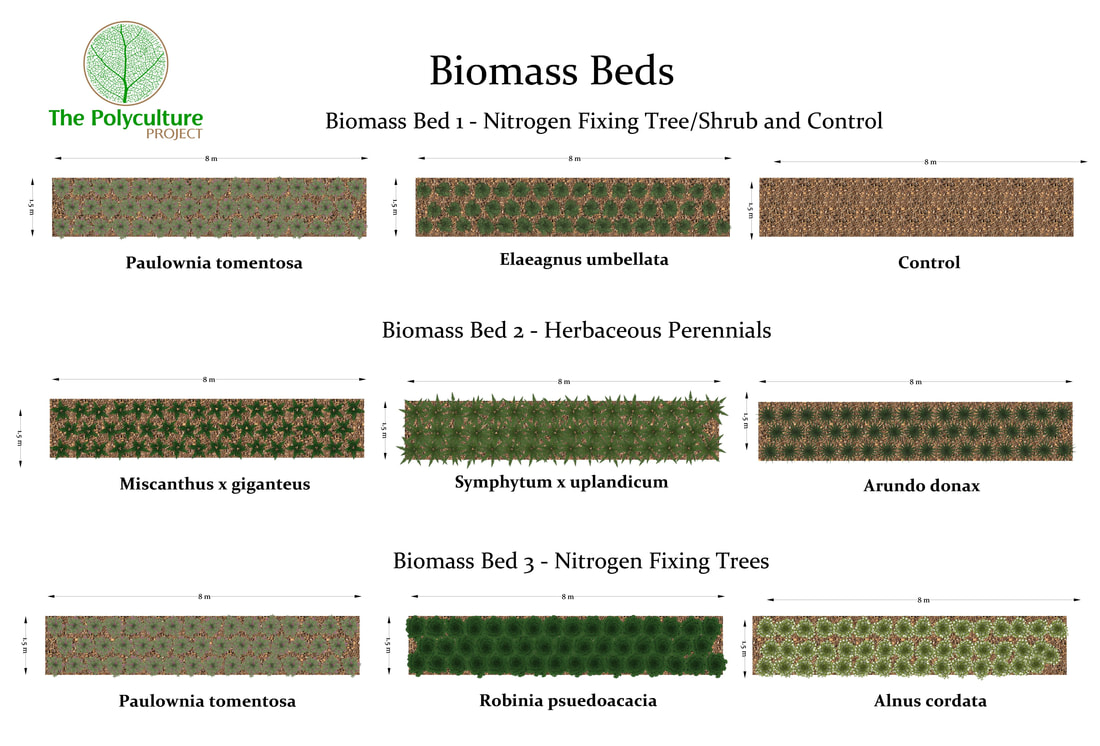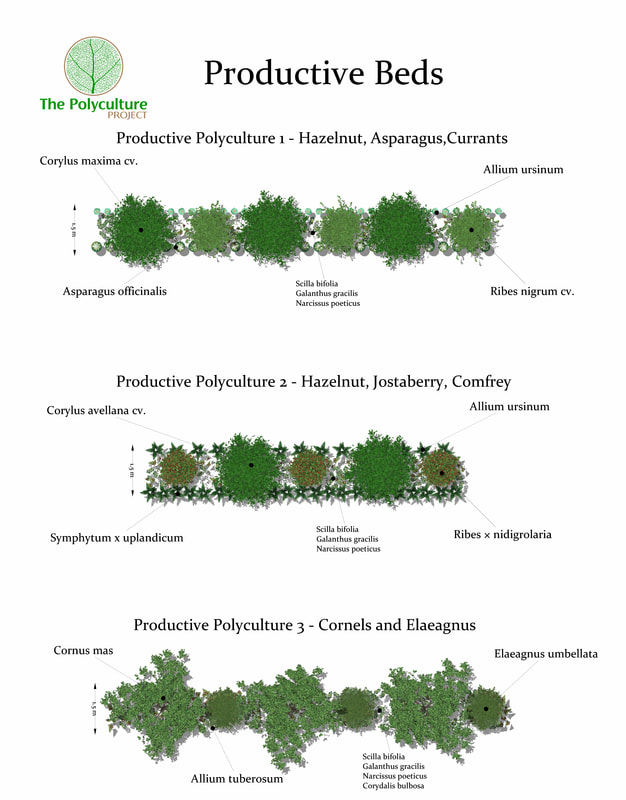In 2017 we established a new garden dedicated to perennial polyculture trials. In 2018 we will start a 3 year experiment in order to discover the properties of perennial polycultures, specifically we'll look at ;
We'll be growing perennial plants for biomass adjacent to productive plants (fruits, herbs, vegatables, nuts) . The biomass plants will be used to mulch the productive plants and to condition the soil.
The garden layout is shown below.
- How productive polycultures can be
- What effect polycultures have on the soil (the physical, mineral and biological properties)
- The relationship between polyculture and biodiversity
- The set up and running costs of the polyculture (in time, money and materials)
- How much fertility we can produce within the polyculture without external inputs
We'll be growing perennial plants for biomass adjacent to productive plants (fruits, herbs, vegatables, nuts) . The biomass plants will be used to mulch the productive plants and to condition the soil.
The garden layout is shown below.
The planting arrangement is set up to utilise light availability in the early stages of growth by planting densely with pioneer plants, in much the same way that a natural succession would occur. During this period the pioneer plants in the biomass beds will be pruned at regular intervals to provide organic matter to the productive plants.
In the 3rd - 4th year there is still plenty of light available to fuel the pioneer plants in the biomass beds.
As the growth of the productive plants increase the light is reduced to the pioneer plants and they can be cut back for mulch . At this stage a transition to shade tolerant fruiting plants and herbs will occur.
The Biomass Beds
We have selected a range of pioneer plants to grow in the biomass beds and will be studying the suitability of each species for use in such a system. The ideal plant should grow well on poor soils, have relatively low water demand, be fast growing and tolerant of regular pruning. We will be growing three types of plants in the biomass beds.
*Whether the Paulownia genus is capable of nitrogen fixation is unclear. Although you may find many reports of this plant being able to fix nitrogen on the internet there are no scientific papers that confirm this. We are hoping the lab that will handle the nitrogen fixation measurement can shed some light on this matter.
- Nitrogen Fixing Trees and Shrubs - Robinia pseudoacacia - Alnus cordata - Elaeagnus umbellata - Paulownia tomentosa*
- C4 perennial grasses - Miscanthus x giganteus - Aruno donax
- Fast growing herbaceous perennials - Symphytum x uplandicum ' Bocking 14'
*Whether the Paulownia genus is capable of nitrogen fixation is unclear. Although you may find many reports of this plant being able to fix nitrogen on the internet there are no scientific papers that confirm this. We are hoping the lab that will handle the nitrogen fixation measurement can shed some light on this matter.
The Productive Beds
The productive beds will host a range of fruit and nut trees with soft fruit bushes and perennial herbs and vegetables in the under story with a range of native local bulbs and herbs to attract invertebrate diversity as well as some simple habitat features such as rock piles and tyre ponds.
We'll be assessing three polycultures in these beds.
We'll be assessing three polycultures in these beds.
What we'll be looking at
The overall experiment will include records of the following ;
- Time and costs taken to establish and plant the beds
- Soil analysis of each bed from 2018 - 2020
- Growth rates of nitrogen fixing trees and shrubs in biomass beds from 2018 - 2020
- Biomass harvested from pruning for each species from 2018 - 2020
- Time taken to harvest biomass
- Nitrogen fixed by each species from 2018 - 2020 - Sofia University Assoc. Prof Ganka Chaneva /Assoc. Prof. Miroslava Zhiponova /Assist. Prof. Detelina Petrova
- Records of invertebrate diversity in the gardens - see here for the Invertebrate Diversity Monitoring Project by Christopher Kirby-Lambert Mbiolsc
- Quantity of harvest
Telephone+359988342649
|
|

